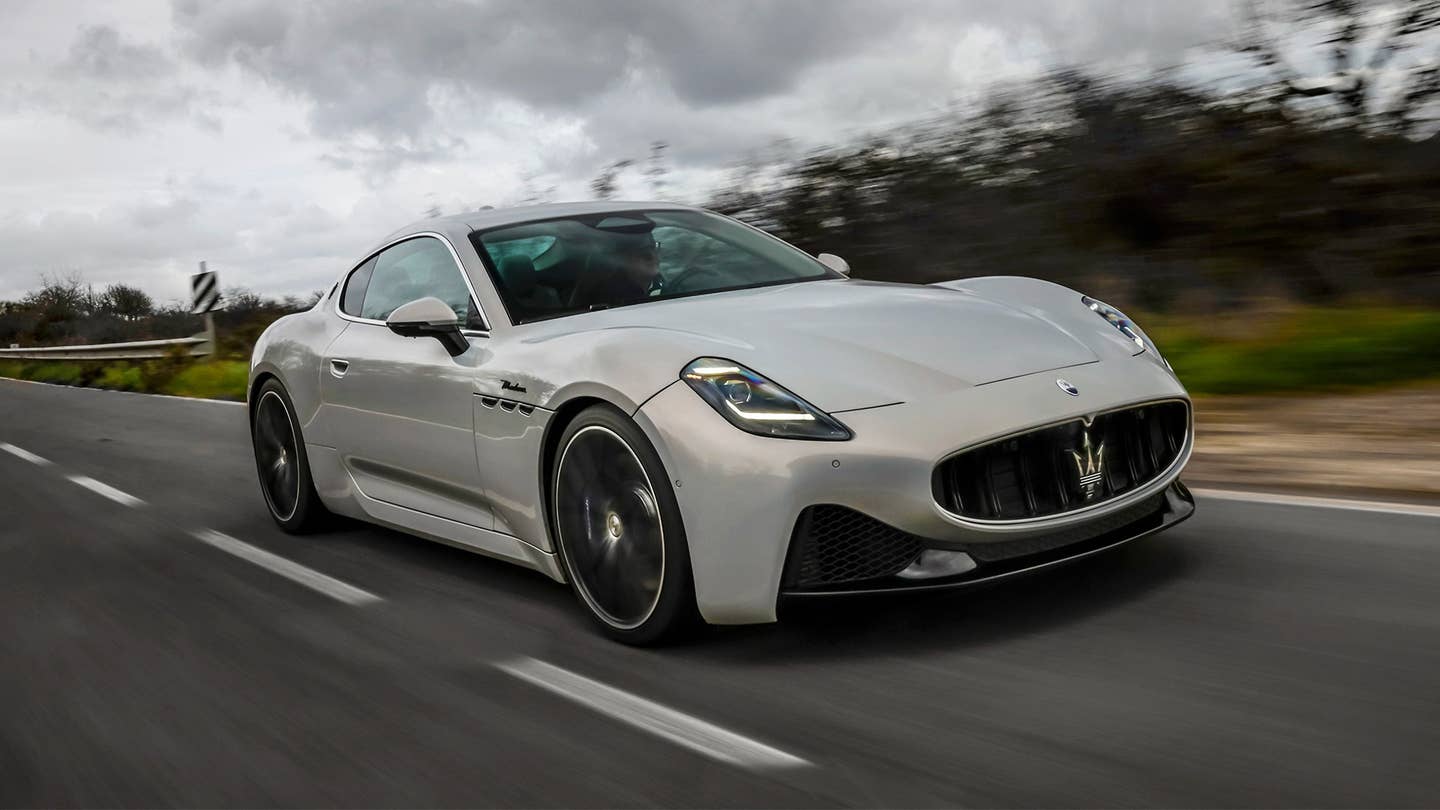What Does ‘GT’ Mean?
If you’re into cars, you know those two letters are used all the time. They’re mainly for marketing, but they have an authentic origin in the automotive world.

We may earn revenue from the products available on this page and participate in affiliate programs. Learn more ›
There may not be a more commonly used combination of letters than "GT" in the automotive world. It's everywhere, on the backs of cars ranging from Mustangs to McLarens. Car companies use it for model names, trim levels, and sports packages. But what does it actually mean?
The abbreviation "GT" actually stands for "Grand Touring," or "Gran Turismo" if you regularly speak with pinched fingers. While the actual origins of the term are a bit hazy, it does come from Italy in the early 20th century, and the definition is clear: A gran turismo, or GT, is any car that blends luxury, agility, and speed. Italian automakers used the term wildly in the 1940s, '50s, and '60s with cars like the Alfa Romeo GTV, the Ferrari 250GT California, and the Lamborghini 300 GT. All of those cars had different types of engines, body styles, and sizes but they all had one thing in common—they blended performance and luxury into a stylish package.
The idea of a GT is to tour, so it needs to be able to travel long distances in comfort. That said, you also want it to handle a twisty road when the occasion arises. GT cars are more comfortable than traditional sports cars but they're sportier than luxury cars, so they blur the line. The body style for GTs isn't set in stone but they're most commonly long, two-door, two-seat cars with pretty looks, lavish interiors, and exotic exhaust notes. Likewise, there isn't a set cost range for GT cars but they're usually expensive, as they need to be at least somewhat upscale.
However, despite the clear definition, automakers play fast and loose with the term. There's the BMW 3 Series GT, which was a five-door wagon-type vehicle. Hyundai used to sell an Elantra GT but that was an economical hatchback and most certainly not a grand tourer. There are even some electric sedans and crossovers with the GT name, such as the Audi e-tron GT and Mustang Mach-E GT. Is it really a grand tourer if you can't cover as much ground in a day due to charging times? The crowd is split.
Just because some automakers like to use "GT" solely as a marketing term doesn't mean there aren't still proper GT cars for sale. In fact, there are a bunch and some even use the name properly. Take the Bentley Continental GT, for example. It not only talks the talk, with a name that literally implies it's capable of touring continents, but it walks the walk. The Conti GT is a big, incredibly luxurious, two-door bruiser with gobs of power and surprisingly impressive handling. How about the Maserati Gran Turismo? It literally spells the name out for you and it backs up its claim with a killer twin-turbo V6, gorgeous styling, a comfy ride, and supercar levels of performance. Plus it gets bonus points for being Italian.
Those aren't the only two bonafide GT cars on the road, though. There's the Lexus LC500, Ferrari Roma, BMW M8, and the Aston Martin DB12, to name just a few.
Gran Turismos, or grand touring cars, have been around for almost 100 years and, thankfully, it's a type of vehicle that still resonates with people. There's a certain romance involved with taking a long journey, maybe with a beloved partner, in something that's as gorgeous as it is fast. Here's hoping that experience sticks around for many more years to come.
Got tips? Send 'em to tips@thedrive.com
